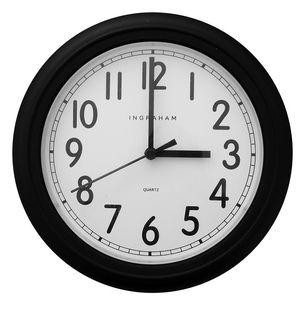|
Life in the Pink Palace
by Elizabeth Robin She glances at the clock. One of those generic black and white disks found in stark offices and classrooms. Worldwide, apparently. 4:13. She takes to staring. First, a closer inspection of that pink vinyl that covers each gently curving sectional. A dusky rose, slightly mottled into carnation pink. Not quite Pepto Bismol, but not quite pretty either. A couch clover leaf, the arrangement into sinuous curves provides four assymetrical sections within the stark square space. It jars her memory of a psych study about soothing wall colors. Pink, she recalls, offers an initial calming effect, then madness fifteen minutes in. The largest of these quarters fills steadily with a multi-generational group, the women in hijabs and loose neck-to-floor garb. Intermittent chants, songs and prayers fill the cloistered space in some unrecognizable language. One begins to sob, another moves to comfort. One commanding older gentleman begins a call, the rest respond. Generally he sits separately, his presence acknowledged with a bow and greeting by each new entrant. She tries not to stare at them from her corner. Instead, she offers intently at the odd metal sculpture above their heads. A puzzle, that. A shiny aluminum rectangle, with smaller, slimmer jointed radiae, all but one parallel. Its central location on the wall, its amorphous nothingness provide a vital distraction to the anxious mind. 4:13. Wasn’t that what the clock read before? She returns to her artistic deconstruction, fighting the madness of waiting, waiting. Not decorative. Not interesting. Not matching otherwise empty walls. Could it have some as yet unrealized function? And as she thinks this, a wave slows, breaks to understanding. A television wall mount. Of course! Like the hermetic seal-shut of a sliding door, the Muslim family’s wailing reaches her reverie, and she returns to that edginess of angst in The Pink Palace. Her granddaughter named it thus, and brought with her visits the aura of a princess in her element, repelling, yet poignantly accentuating its tragic potential. When the pink princess blurts I want daddy back the way he was before, she assures the little girl that this will happen, and wonders at her duplicity. In Pink Palace limbo, all are waiting, imprisoned within a web of what ifs. Each one’s world has compressed to just get well. This, the unspoken mantra. Here, hope runs on a laugh track. False, tinny rings peal away in between relay visits in pairs, masked and scrubbed, watching machines keep her son alive. Or their mother. Or her husband. His sister. Some sit in solitude, or like the prayer group, in swarms. Most roil through a rollercoaster from stillness to agitation to stoicism. Some remain silent. Some need chatter. No single pose rules, but the anxiety stays a palpable universal. One blurts her story: My husband was eating a lamb chop. Swallowed a bone. It pierced his esophagus. They had to remove it. Unbelievable, really. Another responds: My sister’s been here for 159 days, waiting. Finally got the call. Best place in the country for a liver transplant, the QE. She volunteers nothing. Can’t speak, really. Unbelievable doesn’t begin to describe her situation. She had planned a spring Nana fix. The calls began three days before her flight. He’s admitted to hospital. Dehydrated, from the flu. And then, He’s been catheterized; they’re worried about his kidneys. And then, He’s been moved to critical care; he’s going into shock. And then, He’s got some virulent infection; they don’t know what, but he’s on antibiotics. And then, He’s been sent straightway to theatre; they may take his arm. And then, He’s stable, with support. More surgery tomorrow. She flies as the surgery proceeds, arrives in time to hear a diagnosis, touch him, whisper I love you plenty before he returns to another theatre run, she to the Pink Palace, where it’s always 4:13. This makes sense now. The Pink Palace suspends our lives into a condensed hope chamber, intersticed tissue underneath space and time. Not a waiting room, but suspended de-animation where hope struggles to face a whirr of pumps and vials and tubes that can temporarily cheat death. She ponders the Belle of Amherst, oddly, who talks about feathers and hope that take flight. But how could she know such elation, who never saw its light? Reinforcements arrive. Her daughter. His father-in-law. Her ex-husband. She has to remind herself, each time he offers another surety based upon no expertise, of his equal right to be present. Even though so absent for most of their son’s childhood. Even though his presence adds immeasurably to her tension. The Pink Palace shrinks to a most miniscule vacuum for hope. Short of breath, each ventilator already claimed. And it’s still 4:13. She beings to wonder, would that be 4:13 a.m., or 4:13 p.m.? The antiseptic clock offers no clues. She amuses herself wondering what he must construct in his morphine-tinged brain to explain the presence of both parents, side by side, after 26 years apart. She hopes he doesn’t assume he’s dead. She doesn’t want him to give up. A bizarre rhythm assumes a routine within this roseate glow. Two wait. Two entertain her grandchild. One shops. One cooks. One cleans up. A relay of antibiotic doses ordered by the health department parses out mealtimes in rigid intervals. Personnel rotate, but the routine does not budge. One day flows into the next, marked only by the flux of newcomers, the absence of past fixtures to the Pink Palace. The Muslim matriarch graduates to a ward upstairs. One liver flunked, so they use a spare waiting for the next patient. That it matches her, cosmic luck. The Pink Palace begins to feel a future in such tales. A septic anxiety dissolves into possibility. It’s still 4:13. But each day, with each vial emptied, each tube removed, the Pink Palace becomes a blushing tribute to the fragility of time, the comfort of space, and the strength of love. |
|
